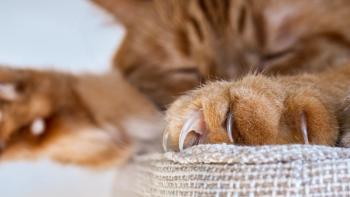
The intricate interrelationship of T4 and free T4 in diagnosing feline hyperthyroidism
Dr. Chen Gilor illuminates two common mistakes you may be making when diagnosing this common endocrine disease.
At a recent
Dogs and cats-or fellow coworkers-being a bit too exuberant to listen to a video in your practice today? Here's a transcript:
The two most common mistakes I think are:
1. Dismissing the diagnosis of hyperthyroidism in cats that have a normal T4. It is not unusual for cats with hyperthyroidism to fluctuate in and out of the reference range for T4. So otherwise if you have a cat that looks like a hyperthyroid cat, a normal T4 should not be used to rule it out. You probably should just repeat the T4 later on and most likely it will be abnormal. Another option would be to run a free T4 and if your T4 is at the high end of normal and your free T4 is high in a cat that otherwise looks like a hyperthyroid cat, then that is consistent with a diagnosis of hyperthyroidism.
2. However, the second mistake in diagnosing hyperthyroidism in cats is relying too much on free T4. Your free T4 is only valuable when the T4 is at the high end of normal. It is not unusual for cats with other diseases-other nonthyroidal diseases-to have a high free T4. The specificity of that test is not very high, so do not rely on free T4 exclusively for making a diagnosis of hyperthyroidism.
Newsletter
From exam room tips to practice management insights, get trusted veterinary news delivered straight to your inbox—subscribe to dvm360.






